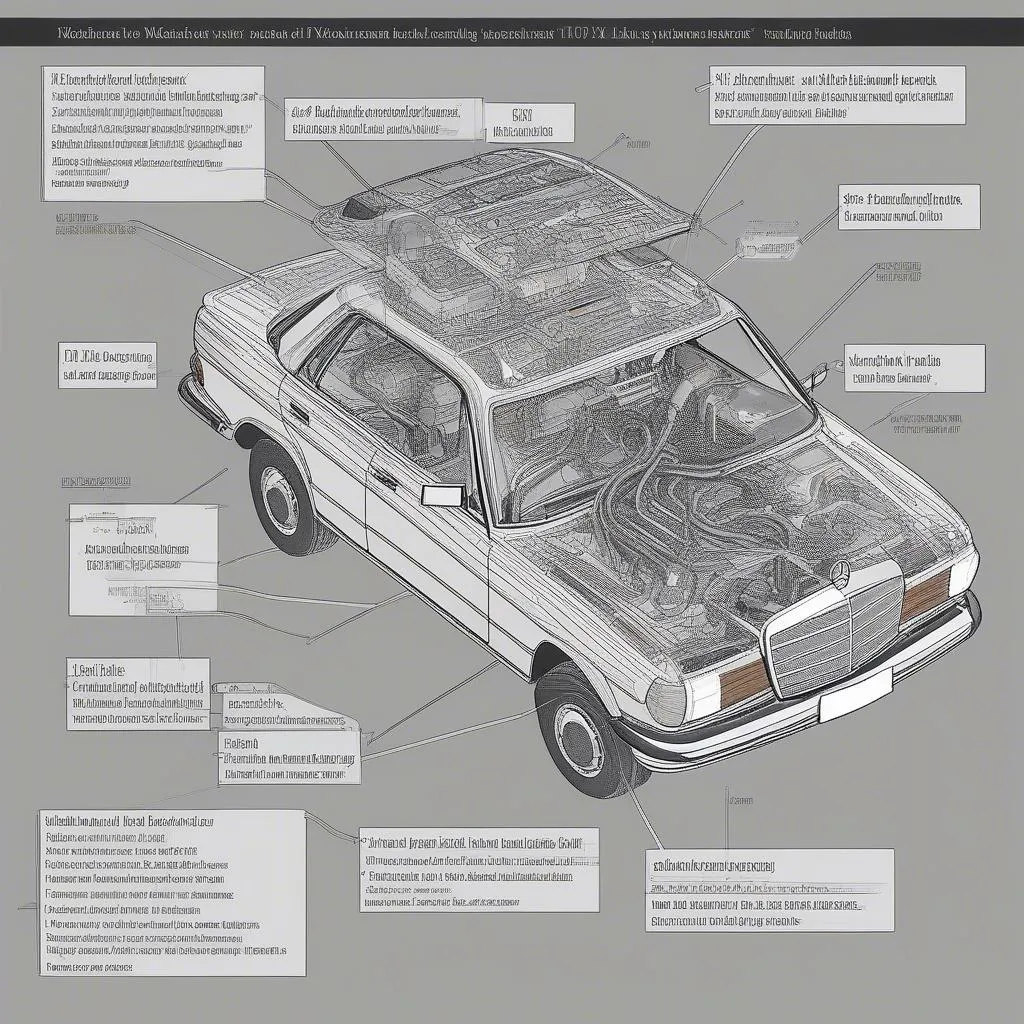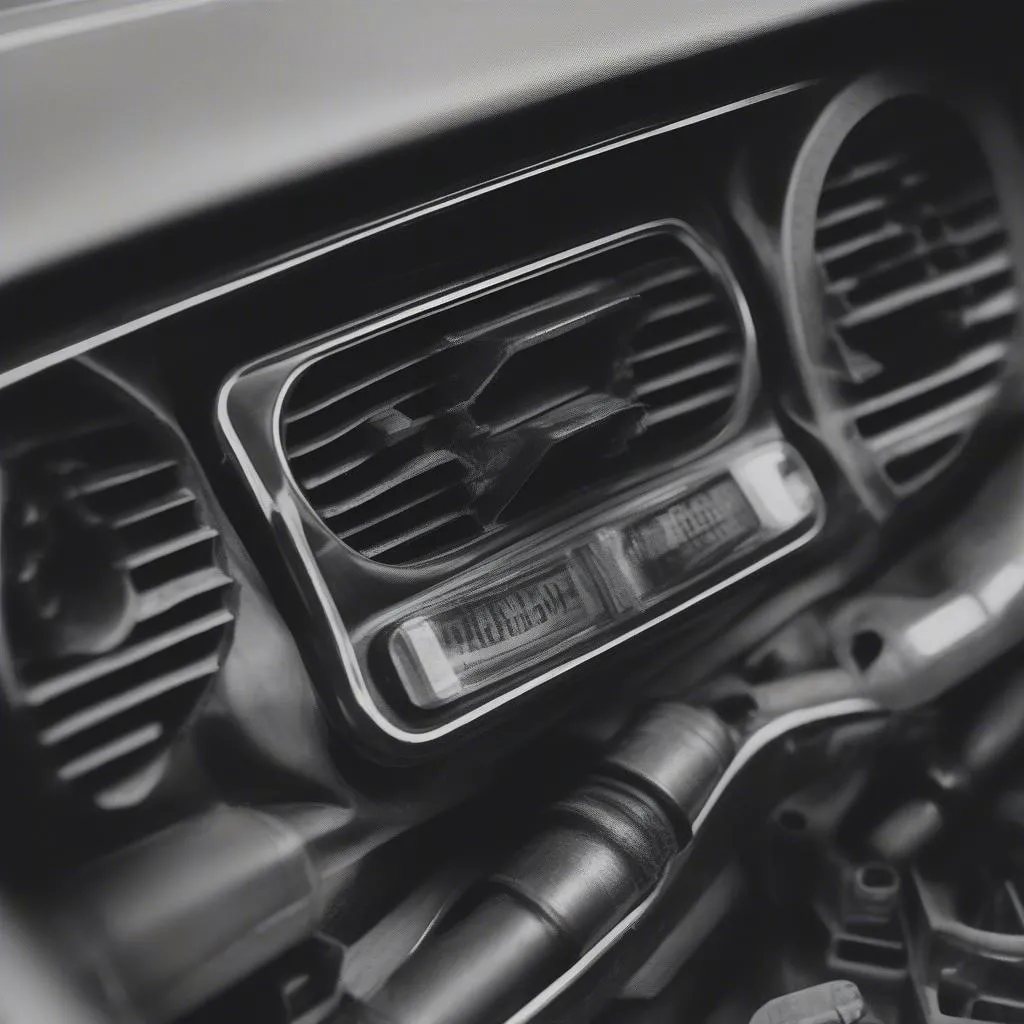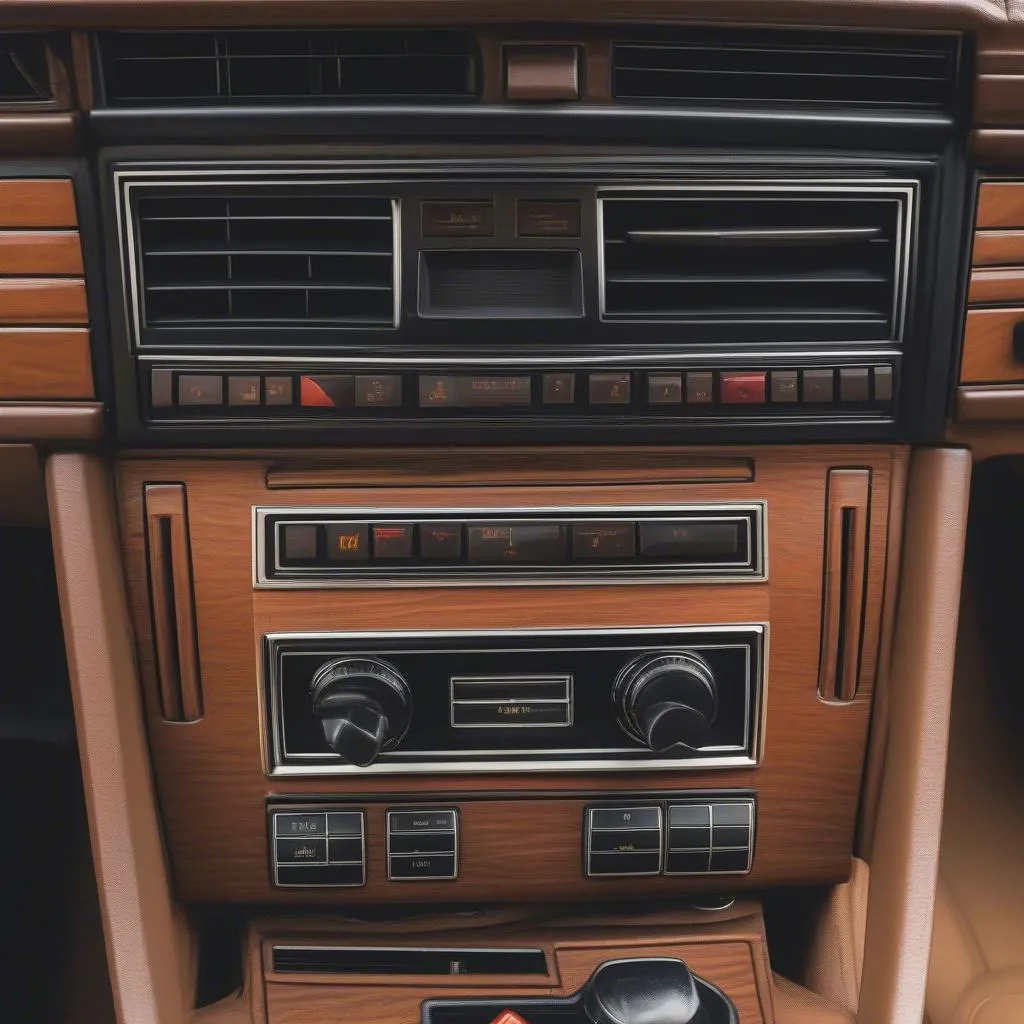Is your Mercedes 300D’s passenger side vent blowing hot air when you need cold or simply not working at all? This is a common issue in these classic vehicles, but thankfully, it’s often a straightforward fix. This article will guide you through the steps to diagnose and repair your Mercedes W123 passenger side vent.
Common Causes of a Malfunctioning Vent
Before we get into the nitty-gritty of repairs, it’s helpful to understand what commonly causes passenger side vent issues in the 1985 Mercedes 300D W123:
- Vacuum Leaks: These cars use a vacuum system to control the vents. A leak anywhere in the system can disrupt airflow and cause issues.
- Faulty Vacuum Pods: Vacuum pods, also known as actuators, control the flaps that direct airflow. A failed pod won’t be able to direct air properly.
- Disconnected or Damaged Vacuum Lines: The vacuum lines connecting the components can become disconnected, cracked, or blocked, leading to malfunctions.
- Control Lever Problems: The control lever itself can wear out or break, preventing you from selecting the desired vent settings.
 Mercedes W123 Vacuum System
Mercedes W123 Vacuum System
Identifying the Problem
- Listen for Hissing: A hissing sound coming from the dashboard, especially when changing vent settings, is a telltale sign of a vacuum leak.
- Feel for Airflow: With the engine running and the AC or heat on, feel for air coming from the passenger side vent. If there’s no air or if the temperature isn’t adjusting correctly, there’s likely an issue.
- Inspect the Vacuum System: Visually check all the vacuum lines under the hood and dashboard for any signs of damage, disconnection, or blockage.
 Mercedes W123 Vacuum Pod
Mercedes W123 Vacuum Pod
Tools and Materials You’ll Need
- Vacuum Pump: To test the vacuum system and components.
- Screwdrivers: Various sizes, including Phillips and flathead.
- Pliers: Needle-nose pliers can be helpful for reaching tight spaces.
- Flashlight: To illuminate the work area under the dashboard.
- Vacuum Line Repair Kit: For replacing damaged vacuum lines.
Repairing the Passenger Side Vent
Disclaimer: Car repair can be complex. If you’re not comfortable working on your car, it’s best to consult a professional mechanic.
Step 1: Checking and Repairing Vacuum Lines:
- Begin by inspecting the vacuum lines connected to the vent system under the hood and behind the glove compartment.
- Look for cracks, loose connections, or blockages.
- Use a vacuum pump to test the vacuum pressure in the lines.
- Repair or replace any damaged lines using a vacuum line repair kit.
Step 2: Testing and Replacing the Vacuum Pod:
- Locate the vacuum pod responsible for the passenger side vent. It’s typically found near the vent itself behind the dashboard.
- Connect the vacuum pump to the pod’s vacuum line and apply pressure. If the pod doesn’t hold a vacuum or move, it needs replacement.
- Replace the faulty vacuum pod with a new one.
 Mercedes W123 Vent Control Lever
Mercedes W123 Vent Control Lever
Step 3: Addressing Control Lever Issues:
- If you suspect the control lever is the culprit, carefully remove the center console or dashboard trim to access it.
- Check the lever’s mechanism for any signs of wear, breakage, or disconnection.
- Repair or replace the lever assembly as needed.
Frequently Asked Questions
Q: What if I’ve repaired the vacuum system, but the vent still doesn’t work?
A: If you’ve ruled out vacuum system problems, the issue could lie within the vent itself or the climate control unit. It’s best to consult with a qualified mechanic or a Mercedes specialist for further diagnosis.
Q: Can I use a generic vacuum line repair kit?
A: Yes, generic kits often work well. However, ensure the kit’s tubing is compatible with the size and type of vacuum lines used in your Mercedes.
Q: I’m seeing an error code related to my climate control. What should I do?
A: Diagnostic trouble codes (DTCs) can provide valuable information. Consider using a reliable OBD-II scanner, like those offered by CARDIAGTECH, to read and understand the codes. This can help pinpoint the source of the problem more accurately.
Conclusion
Fixing your 1985 Mercedes 300D W123 passenger side vent can seem daunting at first, but with a little patience and the right information, it’s a manageable DIY project. Remember to check for vacuum leaks, inspect the vacuum pod, and examine the control lever. If you’re not comfortable with the repair, don’t hesitate to seek help from a trusted mechanic.

